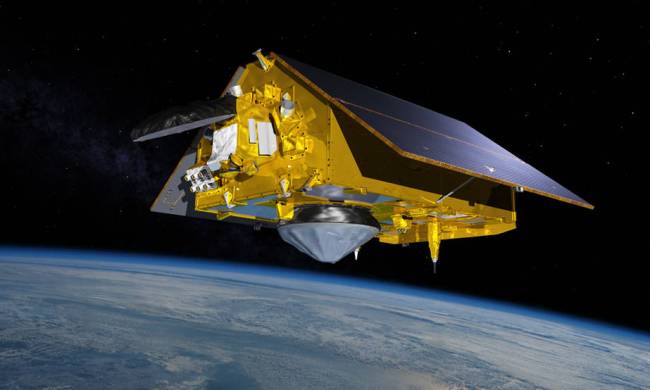Space Features
About
Explore Space Features

Asimov’s vision of harvesting solar power from space could become a reality
Isaac Asimov's idea of harvesting solar power from space may not be a thing of fiction much longer as space agencies explore the concept.







Could the key to living in space be … a good lighting system?
Lighting is typically more of an afterthought when it comes to space habitats, but as it turns out, it may just be the most important part

Here’s why scientists think life may have thrived on the ‘hell planet’ Venus
Venus is one of the most brutally inhospitable places in our solar system, but many scientists think life could have thrived there at one point. Here's why.

Inside the crazy plan to scoop up and bring home a bit of the Venus atmosphere
Most missions collect samples and analyze them in situ with relatively basic instruments. This mission takes a totally different approach.

SpaceCamp, the amazing 1986 film, is stuck in a streaming black hole
Released months after the space shuttle Challenger disaster in 1986, SpaceCamp disappeared from pop culture despite a standout cast and legendary composer.

The art and science of aerobraking: The key to exploring Venus
Slowing a spacecraft down takes tons of fuel, so scientists are eager to try something different on Venus: slowing down with the help of the planet's atmosphere

NASA’s latest method for hunting exoplanets? Enlisting amateurs
NASA has a new program that gathers data from millions of amateur astronomers, and it could be a game-changer for astronomy.

Inside the Vera C. Rubin Observatory, home of the world’s largest digital camera
The Vera C. Rubin Observatory houses the world's largest digital camera. Here's how it'll help astronomers explore the cosmos

How NASA’s astronaut class of 1978 changed the face of space exploration
NASA's 1978 astronaut class was a turning point for the agency, and it set the stage for the more diverse and inclusive space program we have today

How will NASA keep Mars astronauts safe from cosmic radiation? Here’s the plan
Space is full of dangerous cosmic radiation, and in order to send astronauts to Mars, we'll need to protect them from it. Here's how.

How the James Webb Space Telescope creates images of ‘invisible’ interstellar objects
NASA doesn't just point a telescope at space and snap a photo. JWST's data needs to be translated from infrared to visible light — then it becomes an image.

What exactly makes an exoplanet ‘habitable’?
Astronomers have been on the hunt for habitable planets outside of our own solar system for decades -- but what exactly counts as habitable?

Here’s what the James Webb Space Telescope will set its sights on next
Now that the James Webb Space Telescope has sent back its first images of deep space, you might be wondering what's coming next. Here's the scoop!

How NASA’s DAVINCI probe will withstand the hellish conditions of Venus
Venus's acidic, high-pressure atmosphere is one of the most inhospitable places in our solar system -- and NASA is building a probe that can withstand it

This is how NASA measures rising sea levels from space
NASA has been monitoring Earth's sea levels from orbit for over 30 years. Here's why measuring from space is actually easier than doing it terrestrially.

24 amazing images of our planet for Earth Day
Let's celebrate Earth Day with 24 stunning images of our very special planet, all shot from space.

Why the moon needs a space traffic control system
As interest in lunar exploration ramps up across the globe, scientists think we need a space traffic control system to avoid collisions and complications.

The James Webb Space Telescope is about to supercharge our hunt for exoplanets
The James Webb Space Telescope is set to launch in the coming months, and when it does, it will completely revolutionize how we hunt for habitable planets.

Spice in space: Inside NASA’s groundbreaking zero-gravity chile pepper project
Astronauts on the ISS are now growing and eating chile peppers in space, so we caught up with NASA to get some pointers on gardening in microgravity.

Meet the bold and brilliant Latinos of NASA
To celebrate Hispanic Heritage Month, we rounded up this list of the most bold and brilliant Latinos at NASA, both past and present

Mars? Old news. The next 10 years will be the decade of Venus
In recent decades, space agencies have mostly been focused on visiting Mars -- but now their sights are shifting to Earth's other planetary neighbor: Venus

Meet the startup aiming to outshine SpaceX with reusable, 3D printable rockets
SpaceX has made some huge strides when it comes to launching an recovering reusable rockets, but Relativity Space wants to take the idea a step further

We’re going to the red planet! All of the past, present, and future missions to Mars
SpaceX isn't the only organization pining to visit the Red Planet. Here's a detailed list of all operational and planned missions to Mars and their objectives.





















